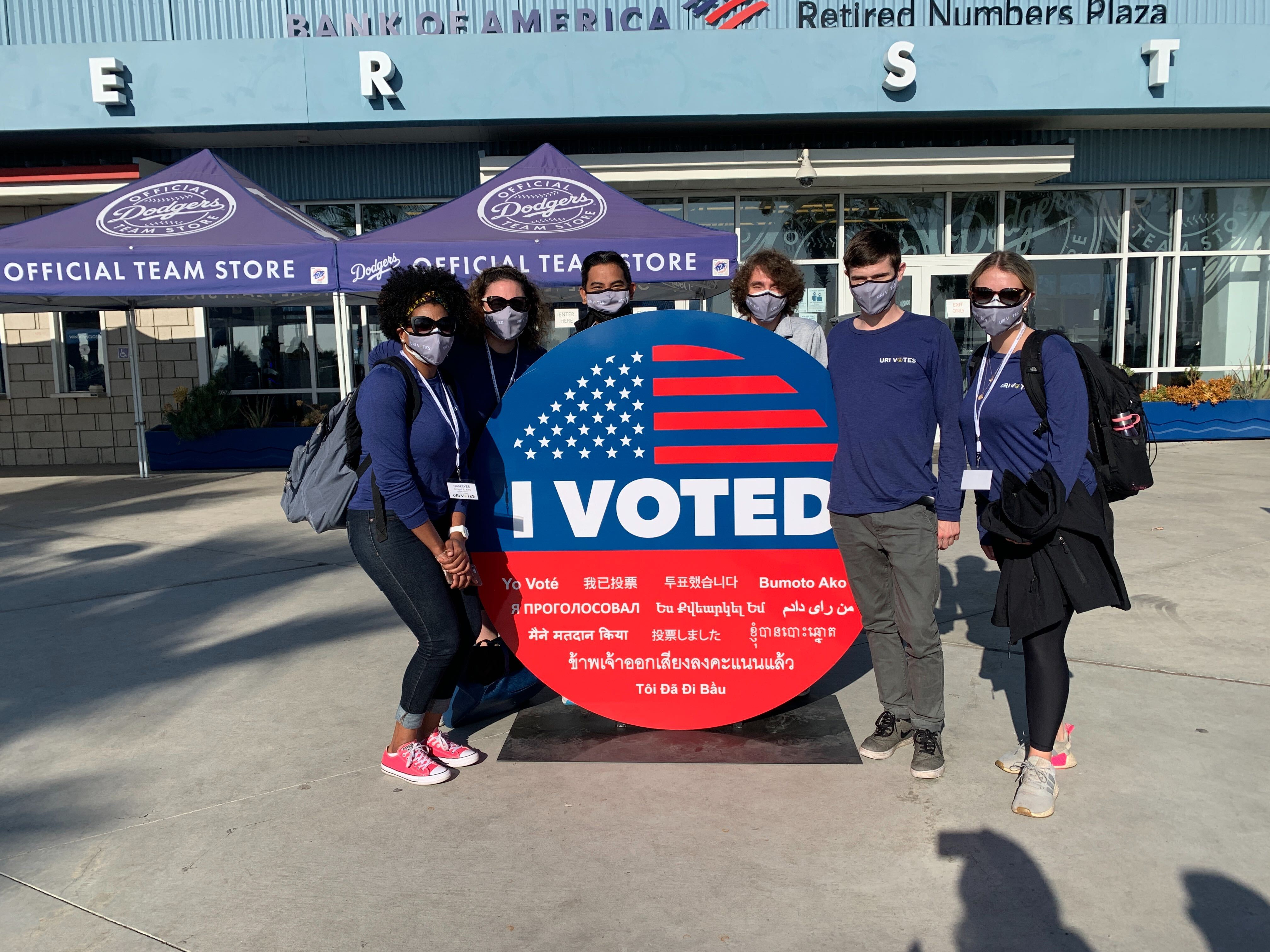KINGSTON, R.I. – November 30, 2020 — The 2020 election is all but complete, but a team of researchers at the University of Rhode Island is still crunching the numbers – not the number of votes, but the statistics used to determine the efficiency of in-person voting.
“I can say with confidence, from a URI VOTES perspective, that we had a successful election season this fall,” said Gretchen Macht, director of the URI Voter OperaTions and Election Systems (URI VOTES) project. “Some lines took longer than an hour, while others averaged 20 minutes, which was nothing out of the ordinary.”
URI VOTES was established in 2017 at the University of Rhode Island’s College of Engineering as part of the RI VOTES project. The aim of URI VOTES is to use data and technological advances to help shorten voter wait times and improve voting procedures.
Working with faculty and students from Auburn University and the University of Nebraska-Lincoln, Macht’s research group collected data in Rhode Island, Nebraska and Los Angeles.
Besides recording how long people stood in line waiting to vote, the researchers also documented how much time it took voters to check in, how long it took them to vote, and the time of day they arrived, to determine the peak voting time at each location.
“In Los Angeles, we observed more than 10,000 voters over seven days at 20 locations,” said Macht, assistant professor of mechanical, industrial and systems engineering.
Macht was joined in Los Angeles by Bridgett King, associate professor of political science at Auburn, as well as four URI graduate students and two undergraduate students.
“Doing time studies in Los Angeles was an amazing experience,” said James Houghton, URI doctoral student in industrial and systems engineering. “We were fully immersed in the research and got to witness a system we spent many months simulating, while collecting valuable data that will help us continue our work.”
In Nebraska, 30 data collectors were hired to monitor activity at 15 locations, covering 20 precincts on November 3. Led by Jennifer Lather, assistant professor of architectural engineering at Nebraska, the group also observed 10,000 voters.
Concurrently, URI doctoral student Dominique Engome Tchupo coordinated the data collection effort in Rhode Island. The Rhode Island contingent, which consisted of 10 engineering and landscape architecture students, observed more than 4,300 voters at five locations.
Well before the election, Macht worked closely with polling locations in Rhode Island and elsewhere in the country to ensure voting took place as efficiently as possible.
“Using simulation modeling software, we planned specific layouts for each location, taking into account social distancing, sanitization procedures and other logistical changes meant to prevent the spread of COVID-19,” said Macht.
The professor and her students also posted an open-source library of software tools on the URI VOTES website to assist election administrators in making data-driven decisions regarding layouts and allocation of resources.
The tools, which can be utilized in future elections, include voting system timers, a data importing and processing tool, polling location diagrams, and visual simulations.
URI graduate student Nicholas Bernardo has worked on the URI VOTES project since it began in 2017.
“My time with URI VOTES has been an excellent learning experience,” said Bernardo. “I can’t wait to dive into the data from this election to see how policy and system changes impacted vote times and voter perception.”
Elizabeth Campbell, an undergraduate industrial and systems engineering student, joined the URI VOTES for the first time this semester.
“Although it seems data collection wouldn’t be the most riveting assignment, I learned so much over the seven days in Los Angeles,” said Campbell. “I saw all the simulations we worked on during the semester come to life. I’m really thankful for this experience.”
The researchers expect to finish processing the data by the end of the fall semester. Once completed, descriptive statistics will be presented on the URI VOTES website. The results will be used to update the group’s simulation models and to perform more advanced analyses of the data.
URI VOTES is funded by more than $700,000 in grants from the Democracy Fund, the Stanford-MIT Project on Healthy Elections and other anonymous donors.
